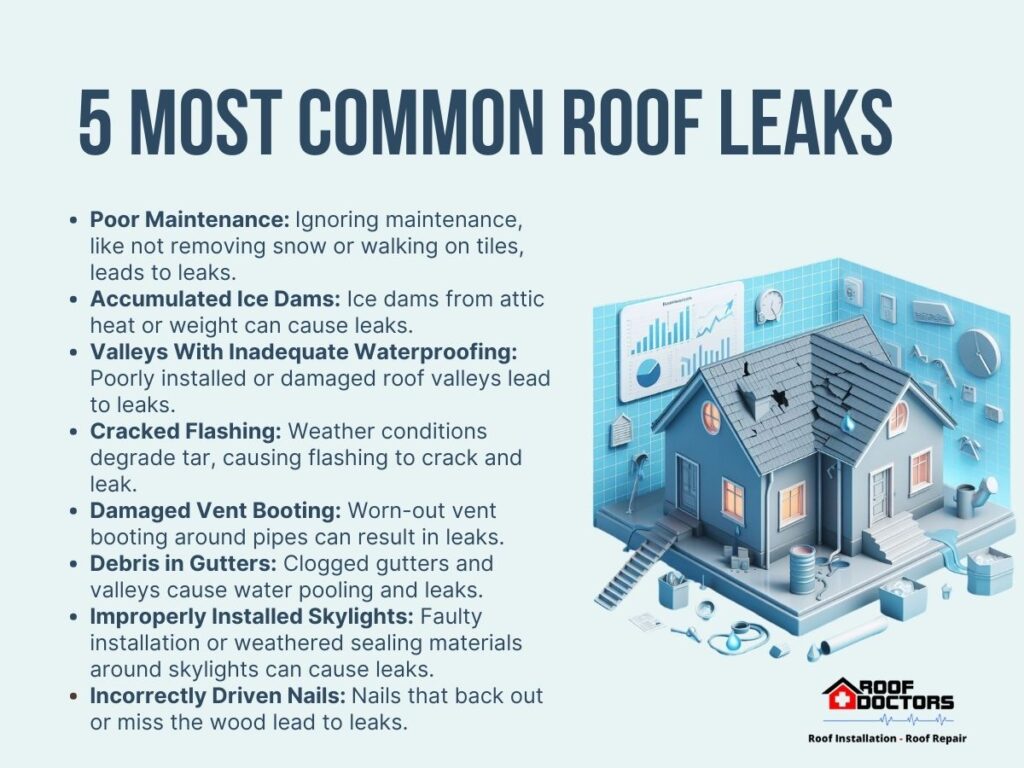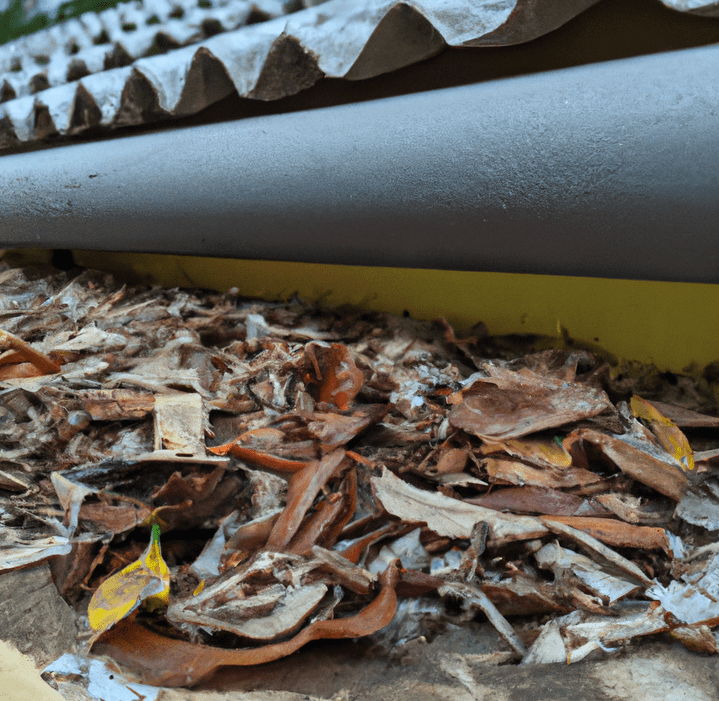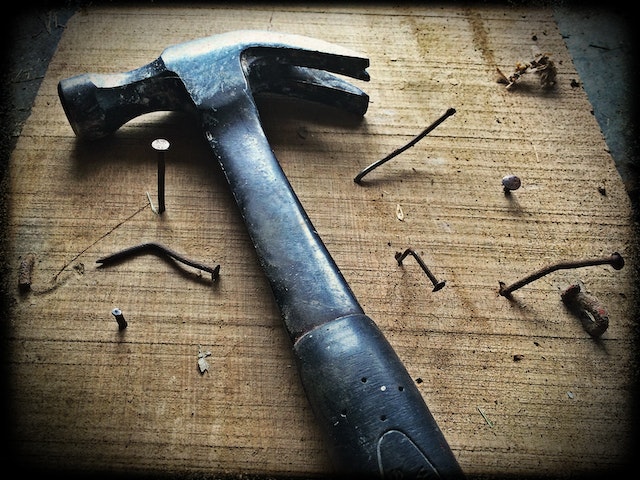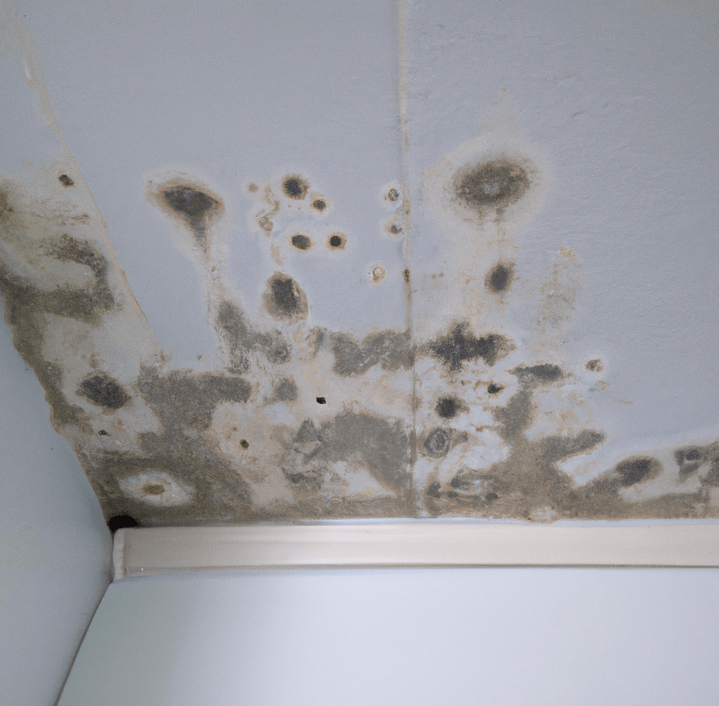Finding a brown patch on your ceiling is a very scary sight. Inevitably, the water will leak through your ceiling, forcing you to scramble for buckets to catch the water.
Until water damage stains appear on walls and ceilings, nobody gives much thought to a leaking roof. That puddle of water means there’s a major leak somewhere overhead. The damage caused by a leaking roof might be irreparable and much outweighs the expense of repairs.
The Roof Doctor cares about your roof’s health and wants you to know the possible causes of the leak. We want to make sure you have as much information as possible before dealing with a stressful situation like a leaky roof, so here are the most frequent types of roof leaks and how to fix them.

1. Poor Maintenance
A leaking roof might be the result of improper maintenance as well as carelessness. For instance, if you do not remove thick ice and snow blocks from the roof, the weight of the accumulation can cause the roof to crack.
Leaks can also be caused by unhealthy behaviors such as walking on tiles. Absent asphalt shingles are another sign that the roof has not been maintained properly.
Accumulated Ice Dam
The ice dam that has formed on your roof can cause leaks to occur in one of two primary ways in colder regions. The excessive heat in the attic makes it possible for the ice water to melt through the structure of the roof.
The weight of the ice ridge can also distort specific areas of the roof, which can lead to cracks appearing in such areas. It is important to keep in mind that the dam begins to form when ice stops melting snow from flowing down the roof.
Valleys With Inadequate Waterproofing
Roof leaks might have their origin in improperly installed roof valleys. This can be a very expensive problem.
This being, you should always collaborate with a professional contractor who is familiar with the appropriate measures and high-quality sealing materials. However, excessive moisture and ice dams that have formed over time can also damage the material with which the roof valley is sealed.
Examining the seams for any signs of water should alert you to the existence of this issue.
Cracked flashing
After some time, the tar used to seal your flashing may deteriorate and lose its cohesive properties, leaving your flashing vulnerable to the elements. Strong gusts and heavy rainfall are two examples of the kinds of unfavorable weather conditions that might accelerate tar degradation.
Cracked flashing is similar in appearance to sheet metal. After being adequately protected, it will be finished with a rubber covering on top.
2. Damaged Vent Booting
A broken vent booting might potentially be the source of a roof leak. A boot is a sort of flashing used to seal the openings around the bottom of pipes that protrude from a roof.
A deteriorating roof or inadequate flashing might lead to a vent booting crack. Depending on a number of variables (such as location, weather, and animals), a pipe boot’s expected lifespan may be anything from a few months to ten years.
Flashing is commonly used by roofers to secure the vent booting around the openings. A roofer can choose to use lead, plastic, copper, or any number of other materials for their boots.
Pipe boots, regardless of their construction type, are used to prevent water from entering a residence via the roof. Pipe boots can’t withstand the elements for the duration of the roof’s existence.
If the vent booting is broken, you will see dark blotches on the walls. Oftentimes, there is a musty odor in the leaking region.
The leaking pipe can be located by inspecting the area of the roof around the source of the leak. It will be up on the roof, in close proximity to wherever that pipe is.
How can a damaged pipe boot be fixed?
An old, cracked neoprene pipe boot can be easily fixed by gluing a small rubber collar over the top of it. The collar will cover the existing flange (the rectangular flashing around the pipe’s base) and protect it from the elements for another ten to fifteen years.
3. Debris accumulated in gutters

Debris and dust can accumulate in gutters and cause them to become clogged.
If gutters become clogged, water might pool, causing the roof to deteriorate and ultimately leak. It can do extensive harm when water finds its way beyond the gutter and underneath the soffit (the completed bottom of the lower edge of a sloped roof).
A valley is formed when two sloping roofs meet to form a V, which allows water to run off the roof without collecting. To ensure that water can continue to drain off the roof, a valley will typically have a gutter connected to it at its midpoint.
When debris collects at the end of the valley, the gutter becomes clogged. Under normal circumstances, this leak wouldn’t occur. Even in the heaviest downpour, water will follow the path of least resistance if the gutter in the valley is clogged with leaves and other debris.
As soon as water makes its way underneath the soffit, the leak will be visible there. If you move the gutter to a new place, the water will flow into a different part of your house.
4. Improperly installed skylights
Over time, skylights have earned a poor reputation. Common belief holds that every skylight has a leak. On the other hand, if the contractor made a mistake in the measurements or used substandard sealing materials, it might be a faulty component of the skylight itself.
Leaks in the roof are often the result of improperly installed skylights. Skylight sealing materials are also susceptible to weathering and damage from persistent rain and high winds. When it rains a lot, water will pool around the skylights and trickle down.
It’s not hard to anticipate the location of a skylight leak. Water will eventually trickle down from the ceiling or floor below it when one of these starts leaking.
Fixing a skylight roof leak: what’s the procedure?
Removing the cladding and flashing kit from a leaking skylight, installing an ice and water shield, and then reinstalling the flashing kit are all that is required to fix the leak. If you do that, you’ll have a perfect seal against water.
5. Nails that were driven incorrectly

Your roof is more likely to spring a leak if there is a protruding nail head. When a roofing nail backs out of a shingle, it causes the second most frequent type of roof leak.
If the nail hits good wood, holds tight, and isn’t overdriven, it shouldn’t cause problems. If not pushed far enough or in the wrong direction, the nail head will pop back up through the shingle.
Rainwater will eventually make its way inside your home after catching on to the head as it slides down your roof. Both shingle roofing nails and decking nails are susceptible to this problem.
The decking nail will eventually work its way out through the shingle if it didn’t touch wood during construction. Hire a roofing company with a good reputation to minimize leaks caused by nails not pushed in all the way.
When the roof finally leaks, there’s a chance the leak might appear anyplace. The location of the badly driven nail on the roof is likely to be the first place you notice water leaking into your home.
How does one go about fixing a leaky roof?
If the decking nail misses the wood, you could simply reposition it such that it pierces the rafter instead. A nail that wasn’t driven in straight would require removal, re-driving, and a new layer of ice and water shield.
The roofer will need to pry up the shingle, remove the nail, and reposition it in order to fix the leak. They would reseal the shingle as well if the nail penetrated it. Then, they’ll use cement to plug the nail hole and re-tape the shingle.
Do you need to hire a roofing contractor to repair your roof?
It’s possible to fix some of these on your own if you’re mechanically inclined or have some experience in building. Thus, contrary to popular belief, not all roof damage repair jobs require the services of a professional roofer.
If you decide to make the repairs yourself, make sure you don’t endanger yourself. You shouldn’t climb a ladder or stroll across a roof if you’re not used to doing either.
Attempting to fix them yourself is OK, but if you make a mistake, it could cause much more severe issues. The difference between professional quality and DIY is often rather large.
Forget about trying to save money by repairing it yourself; your life is more important than any amount of money. Roof inspection and maintenance should be the one and only time you bring in a professional.
A professional can spot most of the issues discussed in this piece before they cause costly structural damage to your property. The best way to prevent leaks from occurring in the first place is to perform routine maintenance on the roof.
Whether you repair a leak or contact a professional, remember that your roof’s lifespan depends on its installation and repairs.
When should you call a roofing contractor to repair your roof?

You should call a roofing contractor to repair your roof as soon as you notice any faults, such as roof leaks or missing shingles. It is in everyone’s best interest to have the damage checked out as soon as possible.
Most of the time, you are completely oblivious to the damage being caused. If you have already detected damage on your roof, there is a good probability that further issues could potentially lead to more problems.
You should ask the roofing contractor to check the roof and ceiling for inside damage when they come.
Take Care of Your Roof
If you notice any of these telltale indicators of a leaking roof, then you can rest assured that you are dealing with one of the most prevalent causes of roof damage, as described in the blog.
There are many possible causes of leaks, one of which is the use of substandard roofing materials or installation. By taking this preventative precaution, you will be able to avoid the expensive water damage that the leaks would have caused.
Maintaining your roof properly requires consulting a professional. At The Roof Doctor, we care deeply about the condition of your roof and strive to get it fixed the first time around. Don’t wait for your roofing issue to worsen before getting it fixed! Simply give us a call today!


